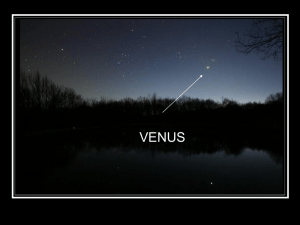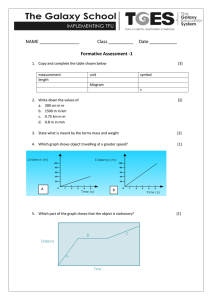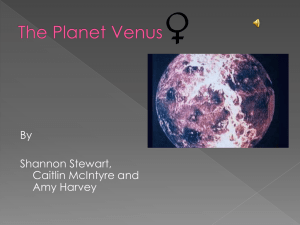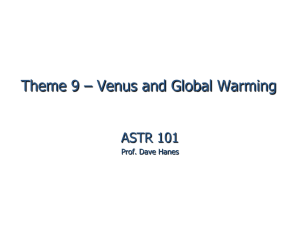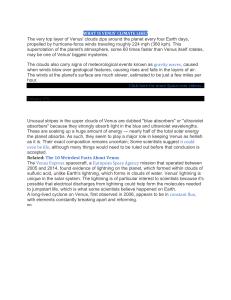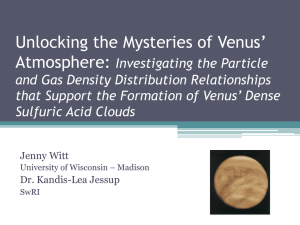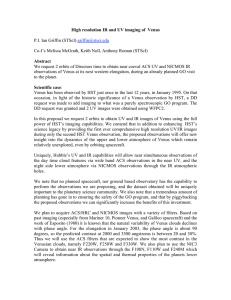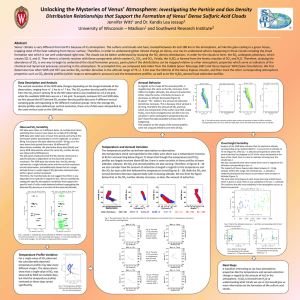Unlocking the Mysteries of Venus' Atmosphere:
advertisement
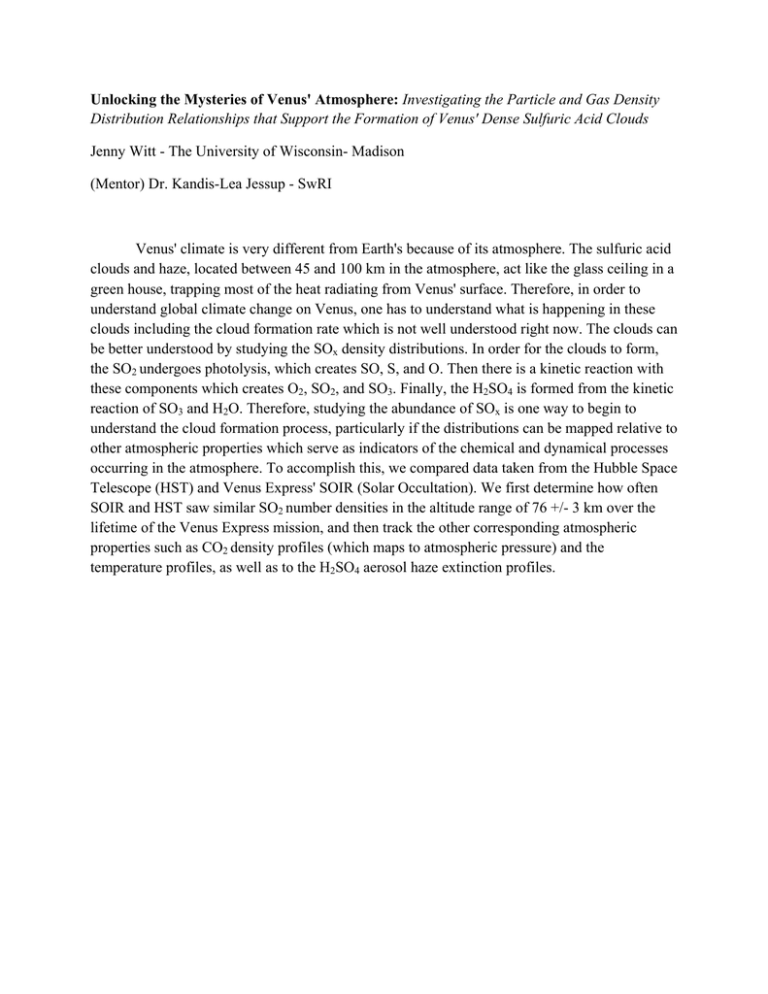
Unlocking the Mysteries of Venus' Atmosphere: Investigating the Particle and Gas Density Distribution Relationships that Support the Formation of Venus' Dense Sulfuric Acid Clouds Jenny Witt - The University of Wisconsin- Madison (Mentor) Dr. Kandis-Lea Jessup - SwRI Venus' climate is very different from Earth's because of its atmosphere. The sulfuric acid clouds and haze, located between 45 and 100 km in the atmosphere, act like the glass ceiling in a green house, trapping most of the heat radiating from Venus' surface. Therefore, in order to understand global climate change on Venus, one has to understand what is happening in these clouds including the cloud formation rate which is not well understood right now. The clouds can be better understood by studying the SOx density distributions. In order for the clouds to form, the SO2 undergoes photolysis, which creates SO, S, and O. Then there is a kinetic reaction with these components which creates O2, SO2, and SO3. Finally, the H2SO4 is formed from the kinetic reaction of SO3 and H2O. Therefore, studying the abundance of SOx is one way to begin to understand the cloud formation process, particularly if the distributions can be mapped relative to other atmospheric properties which serve as indicators of the chemical and dynamical processes occurring in the atmosphere. To accomplish this, we compared data taken from the Hubble Space Telescope (HST) and Venus Express' SOIR (Solar Occultation). We first determine how often SOIR and HST saw similar SO2 number densities in the altitude range of 76 +/- 3 km over the lifetime of the Venus Express mission, and then track the other corresponding atmospheric properties such as CO2 density profiles (which maps to atmospheric pressure) and the temperature profiles, as well as to the H2SO4 aerosol haze extinction profiles.

